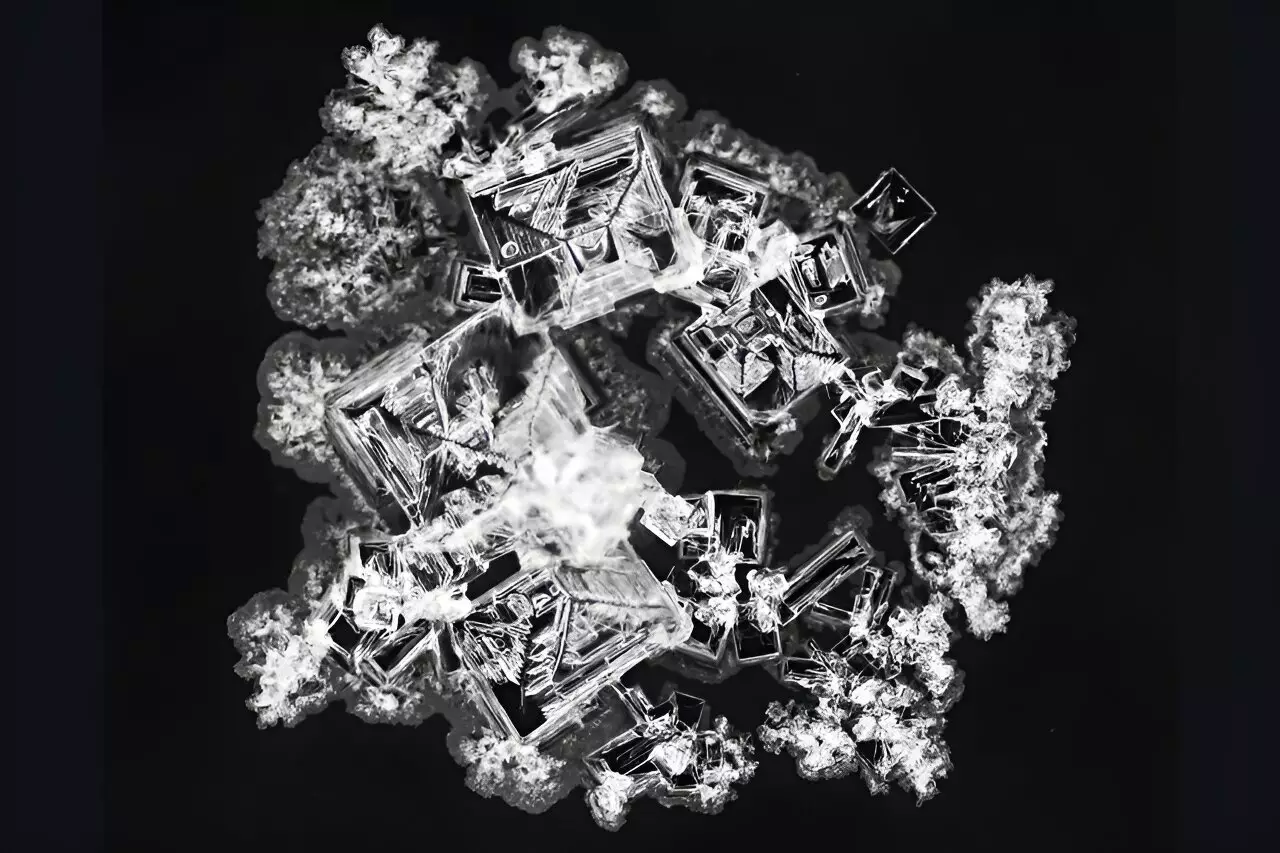When we think of scientific exploration, the image that often comes to mind is one of lab coats, microscopes, and meticulous experimentations. However, recent research from Florida State University beckons us to shift that perspective. Imagine gazing at a dried droplet of salt solution, where every fleeting pattern formed bears an uncanny resemblance to abstract art. Each droplet, no larger than a penny, is not just a piece of art but a source of chemical information that can be deciphered through innovation in machine learning technology. This convergence of the aesthetic and the analytical is what makes this research groundbreaking.
Breaking Ground: A Machine Learning Approach
The study published in the *Proceedings of the National Academy of Sciences* presents a revolutionary approach to identifying the chemical composition of various salts. Instead of merely relying on traditional methodologies, the researchers employed advanced machine learning techniques designed to recognize patterns. Oliver Steinbock, the principal investigator and Cottrell Professor of Chemistry, articulated the goal succinctly: to “take chemical fingerprints of different salts.” The endeavor requires an in-depth understanding of unique salt formations, which might appear visually similar but possess distinct chemical signatures.
To achieve this, the team captured over 7,500 images of 42 different salt stains. Each of these images underwent transformation into 16 parameters that could be analyzed using machine learning algorithms. What stands out about this methodology is its ability to convert visual data—abstract patterns of crystallized salts—into quantifiable metrics including area, compactness, and texture. The beauty of this transformation lies in its precision; subtle distinctions that the human eye might overlook become critical indicators of differing chemical properties.
Remarkable Accuracy in Predictions
What happens when the researchers present this data to the algorithm? Astonishingly accurate predictions. The machine learning program successfully identified the correct type of salt in a remarkable 90% of trials. This level of accuracy underscores the potential of combining traditional chemistry with cutting-edge technology. “Who would think that from a photo, you can tell the difference between sodium chloride and potassium chloride?” Steinbock rightly asks. Such insights underscore the transformative potential of technology, breaking down barriers between visual identification and chemical analysis.
Future Prospects: Expanding Potential Applications
The implications of this research extend far beyond academic curiosity. With plans underway to expand the training dataset with hundreds of thousands of additional images, the researchers intend to refine their tool’s robustness. However, this ambitious goal necessitates lab automation—a critical leap currently being tested via a robotic drop imager. The role of automation cannot be overstated; it ensures the rapid processing of vast quantities of images, a feat that human researchers would struggle to comprehend fully.
The power of this technology can be harnessed in multiple scenarios. For example, outfitting a rover with a comprehensive chemistry lab would demand hefty investments; conversely, equipping it with a camera teeming with machine learning capabilities presents an elegant and cost-effective solution. The implications resonate through various fields, from materials safety testing and rapid screening for illicit drugs to diagnosing blood samples in resource-limited settings. The ability to obtain reliable results with merely a few milligrams of material stands as a testament to the efficiency and ingenuity of this approach.
A Paradigm Shift in Chemical Analysis
The research posits a significant paradigm shift in how chemists might conduct initial analyses of unknown substances. As Bruno Batista, the lead author of the study, notes, practitioners may benefit from quick assessments of spills or stains in the lab. This tool empowers chemists, providing a powerful first-line analysis without the exhaustive steps traditionally necessary for chemical identification.
The interplay between aesthetics and science fosters a captivating narrative, one that invites broader participation and imagination. Just as abstract art captures the nuance of a moment, these salt patterns encapsulate a wealth of chemical knowledge waiting to be revealed. It highlights not only the beauty inherent in scientific exploration but also conjures a future where technology augments human capability. In a world relentlessly yearning for precision and efficiency, this innovative convergence promises to shape the way we approach chemistry in the years to come.

